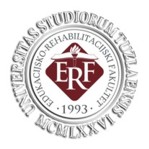SPECIFICS OF THE IMPLEMENTATION OF THE METHOD OF ADJUSMENT AND INDIVIDUALIZED METHODS OF WORKING WITH STUDENTS WITH DISABILITIES
Keywords:
Education inclusion, Individualized approach, Didactic and methodological support, Children with difficultiesAbstract
Teaching students with difficulties in inclusive conditions could be observed as a process of change which can have its inception in each teacher if the teacher is open to and prepared for change. Therefore the responsibility of the school as well as the responsibility of each teacher is to offer support and services that will enable education for students with difficulties that satisfies their unique, individual education needs in a less restrictive environment. The aim of the paper is to research the specifics of implementing adjustment methods and individualized procedures in working with students with difficulties. The sample of the subjects is comprised of 344 teachers from the city of Zagreb and Zagreb County. A questionnaire on the Specifics of implementing the adjustment methods and individualized procedures in working with students with difficulties was developed which consists of 25 variables of the ordinal type on a 5- level scale. The results of the One Sample T Test conform on all variables the high prevalence of implementation of individualized procedures in working with students with difficulties. The one way ANOVA (in the bootstrap model) confirms the statistically significant difference between subject teachers, classroom teachers and teachers who are both subject and classroom teachers in the prevalence of the implementation of the adjustment methods and individualized procedures in working with students with difficulties. From the arithmetic mean values (Hochberg post hoc) concludes that classroom teachers statistically significantly more frequently implement the adjustment methods and individualized procedures in working with students with difficulties than their colleagues in subject teaching.
Downloads
Downloads
Published
How to Cite
Issue
Section
License

This work is licensed under a Creative Commons Attribution-NonCommercial-NoDerivatives 4.0 International License.







